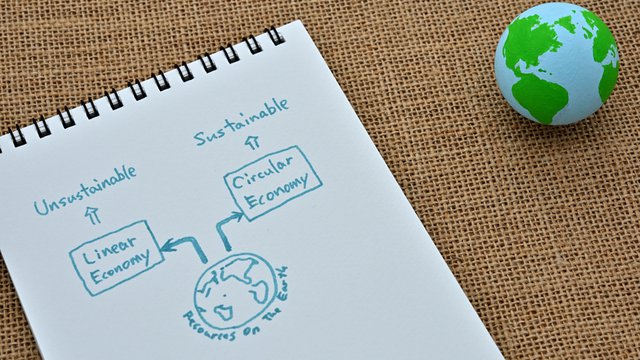

Although there are more environmentally sustainable alternatives, the idea of "buy, use, dispose" predominates in our society. Known as linear economics, you can study this traditional economic model in our Degree in Economics in Madrid.
The linear economy consists of producing different goods from raw materials that are subsequently consumed. Surplus products or materials are discarded, with no possibility of being reused.
Do you want to know more about the linear economy and learn about other more efficient and sustainable models that are currently being developed? We tell you this and more in this post!
Today, the linear economy is an economic model based on the extraction and exploitation of natural resources or raw materials to create different products. Its life cycle is usually very short, so it can generate a high volume of waste.
The main peculiarity of the linear economy is its ease of acquiring new resources at low costs.
The linear economy model is currently the most popular model among companies. The main reason for this has to do with one of the key objectives of microeconomics: to achieve financial expansion.
However, linear economics is subject to innumerable dangers. Among its most serious consequences is the environmental degradation resulting from the overconsumption of products.
Some of the disadvantages of this economy are:
There are numerous examples that illustrate the situation of the linear economy today and explain its dangers for the environment. Here are a few:
In recent years, the circular economy has become one of the environmental economic models that aims to combat the linear economy.
The fundamental pillars of the circular economy are efficiency, intelligent use of resources and moderation of consumption. Therefore, the circular economy focuses on generating value and preventing it from being wasted outside the system.
Some of the differences between the linear economy and the circular economy are as follows:
As you can see, the linear economy and the circular economy represent two very different approaches to production and consumption. In recent years, the world has become aware of the need to conserve natural resources and ensure a more prosperous future for generations to come.
As a result, more and more companies are adopting a circular economy system that allows them to reduce their environmental impact. This, in turn, allows them to generate new business opportunities that promote sustainable initiatives for our planet.
If you are interested in this field, the Master In Financial Management at Universidad Europea will also train you to face the challenges derived from this sector.